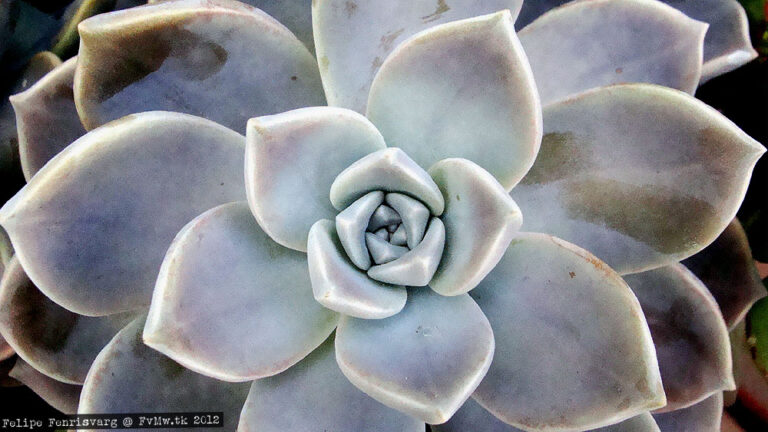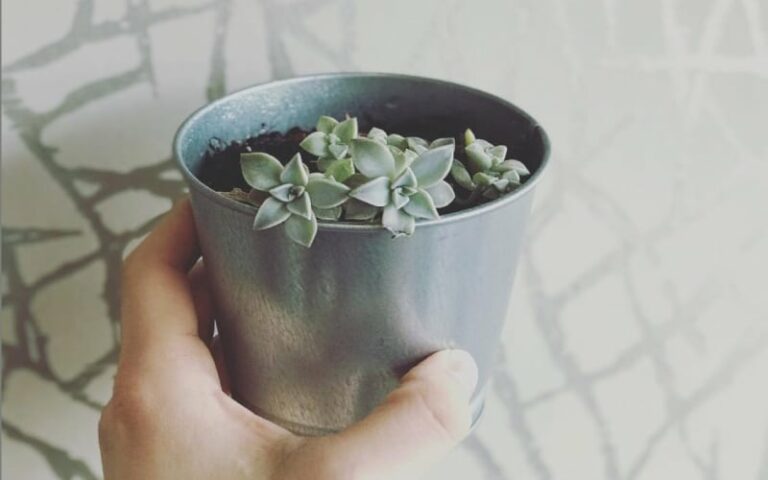The Ghost Plant, also known as Graptopetalum paraguayense, is a succulent native to North America, and Mexico. Its translucent, fleshy leaves give this plant an almost ghostly but cool appearance. We also love them, because they are relatively low-maintenance and can be propagated easily from leaf cuttings. Ghost Plants are drought-tolerant and can store water in their fleshy leaves, making them an excellent choice for dry, low-water gardens. They are commonly used in rock gardens, container gardens, and mixed succulent displays.
Most popular Ghsot plant types:
- Graptopetalum x Graptosedum ‘Bronze’
- Graptopetalum x Graptosedum ‘California Sunset’
- Graptopetalum x Graptoveria ‘Tibutans’
- Graptopetalum x Graptoveria ‘Fred Ives’
Care
One of the reasons why beginner gardeners love Ghost plants, is due to their low-maintenance needs (just like the Jelly Bean plant). You really need to pay attention to a few things to keep these plants happy.
- Soil: Good drainage is key for Ghost plants when it comes to their soil. This is even more important if you live in an area with lots of rainfall. You can plant them in raised beds (50% grit, gravel, or sand, 50% potting mix) or in pots (50% sand, 50% cactus soil mix).
- Light: Full or partial sun is the way to go with Ghost plants. Indoors, you should place them either in an east or south-facing window to give them enough natural light.
- Water: As mentioned before, Ghost plants do not require much care, so watering them weekly (outdoors) or every two weeks (outdoors) is more than enough.
- Temperature: Even though Ghost plants can survive at 10°F outdoors, the ideal conditions are 60 – 80°F with less than 50% humidity. One more thing: If Winter is especially rough in your area, cover the plant in mulch until warmer temps.
Propagation
You only need a healthy leaf to propagate Ghost plants, or you can use an offset cutting:
- Use clean pruning shears to cut off an offset that is approximately one-fourth the size of the parent plant. Leave around 1 1/2 inches of stem beneath the rosette.
- Let the stem rest for 2-3 days to form a callus, then plant it in a pot filled with a cactus potting mix.
- Wait about 5 days and start watering
- Reduce watering to once every two weeks after the plant is well-established.
You can also use seeds to propagate a new plant, but the above-described method is definitely the fastest way.
Pruning
Ghost plants and other succulents can be kept tidy and controlled through occasional pruning. To ensure new growth emerges where you want it, always make cuts or prune in the desired location. Shaping your plant to your liking is easy. Simply cut above a branch or bud that is growing in the direction you prefer.
After pruning, you can use the cuttings to propagate new plants. Allow the cut-offs to wither for a few days, then place them in a porous potting soil or hanging pot.
If you’re working with a garden-ground plant, it’s best to prune at the beginning of winter, before new growth begins. When pruning flowering varieties, wait until winter when they are dormant.
To prevent infections, use sharp, easy-to-clean knives or scissors when pruning your plants.
Benefits of pruning your Ghost plant:
- It helps when plants become tall and thin due to insufficient sunlight, as it clears leaves and unwanted canopies, allowing sunlight to reach the plant.
- Enables you to expand your plant garden by propagating new plants from the branches.
- Encourages new growth and rejuvenates plants by stimulating sprouts of branches or creating a denser canopy.
Common pests
- mealy bugs
- aphids
- scale
Frequently Asked Questions
Its translucent, fleshy leaves give this plant an almost ghostly but cool appearance.
Are Ghost Plants toxic?
In small quantities, the Ghost Plant is an edible plant and non-toxic to humans or pets.
Do ghost plants change color?
As a matter of fact, they do! The color of the plant depends on how much sunlight they get, and at what temperature they are grown.
Can you cut a ghost plant?
The fastest way to propagate a Ghost plant is by using cuttings. Cut off an offset, plant it and start watering it after 3 days. When the plant is fully formed, reduce watering to once every two weeks.

